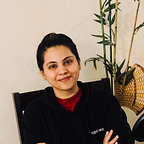Performance management: The core of self improving organizations
How to design a self-improving organization trying to tap into peer power.
When we founded Codewave, we wanted it to be a work environment that finely balances autonomy & structure (just enough) to gently nudge greatness in people. We believed in the principle of self-transformation & that “leadership” is best nudged in people, not exercised on people.
It’s inevitable that in such environments work is driven by participative leadership & “peer power”.
The objective of this post is to explain how feedback is given, received, acted upon at Codewave and how performance driven incentives are designed to activate altruistic (social) behaviors in people.
Peerly: Our continuous growth framework for self-improving teams & people
At Codewave, formal performance reviews happen once in every 6 months, (while we encourage peer feedback to be given and received outside of formal reviews).
Step 1: Peerly panelists coming together
A peerly panel is formed in January & July, based on one’s ability to observe, listen, empathize, articulate & gain clarity & consensus on actions. The panelists are nominated by people & these are generally the ones whom people go to for local decisions & are also good at establishing peer comfort (listening & empathy).
Anyone, the day they join Codewave, becomes already eligible to be a Peerly volunteer.
For subjects that have directly worked with customers, the panelist observes feedback signals from the customer to gain a 360 perspective.
Step 2: Observers collect feedback for subjects
Observers find people who have interacted with the subjects in the last 6 months — ones who may have interacted actively or occasionally. Observers then, sit down with these people to collect peer feedback, taking them through a survey questionnaire and interviewing them on their experience with the subject on these 5 parameters:
Dependability, Competence, Ownership, Teamplay, Impact.
The output of this exercise is to capture degree of agreement / disagreement on above behaviors, along with subjective feedback / review that explains areas of excellence & opportunities for improvement.
The feedback giving process ends with one last question:
Is this peer already performing at a greater level of responsibility? Yes / no
Step 3: Observers consolidate & explain feedback to subjects & gain acceptance
This is the most important step and what we consider the culmination of all our learnings as a people first company, practicing people first values — such as trust, transparency, empathy, peer comfort & psychological safety.
This is a 1–1 meeting between the Observer & the subject, where the subject walks through their self — assessment form, followed by the Observer walking through the collected 360 feedback.
The observer tries to consolidate how the subject aspires to grow (self assessment) & peer feedback (peer expectations), and helps the subject visualize a broad growth roadmap for the next 6 months term.
Subject is encouraged to do a self retrospection and come back with a clear growth path aligned with their interests and what they need from the company to help achieve it.
Step 4: Observers gather for hike decisions
Finance manager announces the company’s overall profits & losses in the last 6 months, and proposes a budget for the current term’s pay revision cycle.
Our monthly bonuses (variables) are disbursed based on the profitability of the project in equal amounts to everyone contributing to the project. More on our monthly bonus payouts here under the section titled:
Performance incentives — Design of monthly variable pay scheme and bi-annual promotion & pay upgrade.
The remaining profits are shared through hikes to all individuals, every 6 months — while maintaining a reserve for the company wherever possible.
Profit is shared on the go, rather than accumulated.
Over a period of 3 years and 6 Peerly cycles, an individual is expected to grow holistically as a leader, while they deliver on their role.
As leadership qualities develop, along side work competencies, Peerly enables people to awaken their leadership potential, at every moment of opportunity.
Peerly has helped us thrive, in the last 6.5 years. By continuously evolving our performance nudging practices and design of incentives, we’ve learnt invaluable lessons in behavioral economics, organizational psychology and higher order human capital leadership, that can be of service to other communities and organizations.
Codewave is a design led technology development services company. Codewave has no managers. It adopts radical transparency, sharing the firms contract terms, margins and revenue with all its members. Performance review discussions happen among peers. All management practices are grounded on trust and common-sense. No silly office timings or vacation rules. It’s no surprise then that our culture is loved, attrition rates negligible and customer satisfaction high. Our practices are evoking a lot of interest and curiosity among modern day organizations.
